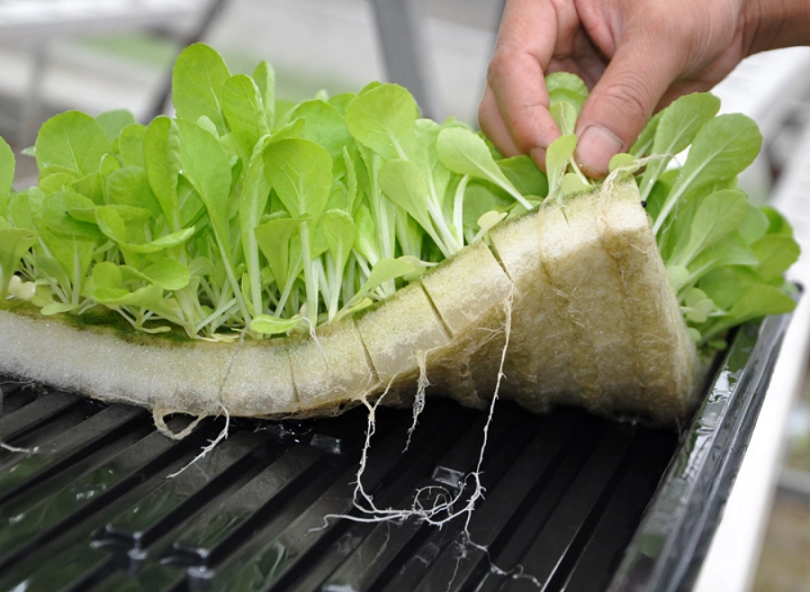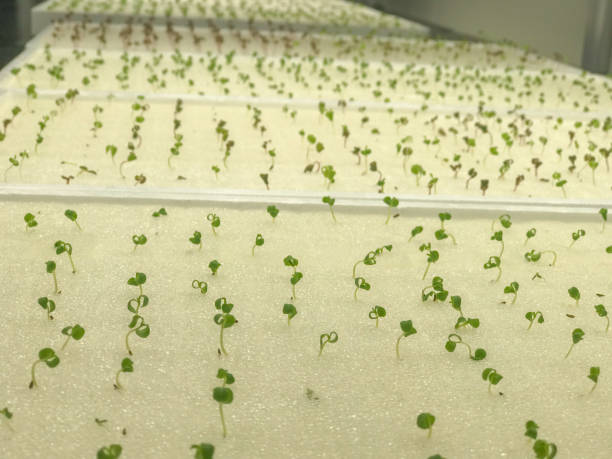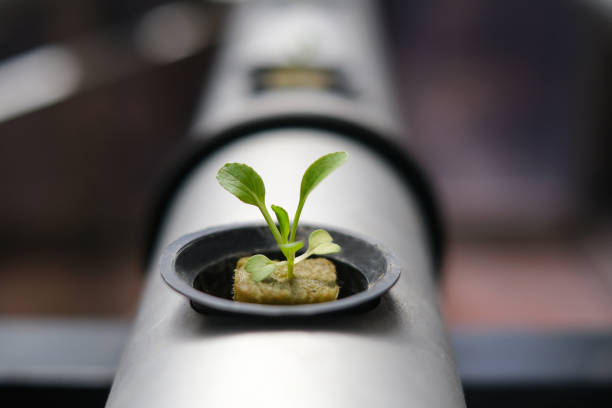
The degradation of soils globally and uncertainty of weather patterns due to climate change are putting a major strain on conventional food production.....
Every year 24 billion tons of fertile soil are lost globally to erosion. The world is facing a crisis of soil fertility. If we're going to fix this, we need to do something radically different; so, specialist foams that chemically, physically and biologically resemble soil were developed.
These polyurethane foams at an urban farm grow two to 10 times faster than plants grown in soil and this system is so efficient, because it enables us to feed our growing population using fewer resources. In the following paper we are going to discuss these foams and their characteristics.
Hydroponic system
Hydroponics is the art of gardening without soil. This controlled environment agriculture (CEA) offers an alternative method for production of food, which is unaffected by the above problems. Synthetic growing media is often used in CEA, and consists of organic and inorganic substrates.
The most important requirement of a hydroponic growing medium is that it holds sufficient water and air to maintain optimum conditions for root and hence plant growth. This requirement can be met by a wide range of substrates but in the past, the material which was established as the market leader was rockwool. This material had proven to be an excellent growing medium but it has some associated problems, i.e., a relatively short useful life (2-3 years max.) and difficulties in disposing of large volumes of material that will not break down. Together these factors have led to increased interest in substrates which can be reused for many years.
It is worth mentioning that for reuse, a substrate mut be suitable for sterilization. In particular it must be easy to dry out and handle. The structure must not break down when used repeatedly.
Hydroponic polyurethane foam
Inorganic substrates make up the major share of soilless media due the consistency of the manufacturing process as well inert nature of the virgin product. They are however not without problems. The growing media was a major environmental burden, due to large amount of energy required for its production. Similarly, rockwool manufacturing has a large primary energy requirement and releases 167 kg of CO2 into the environment per cubic meter produced.
Polyurethane foam has the potential to provide a good growing medium that can be sterilized easily and be reused for many crops. In other words, it has long thought of to be a suitable synthetic soil, with the first patent for this use being issued in 1976. PUF substrates have been reused as synthetic growing media for up to 10 years and can even improve over successive crops with roots improving the water holding capacity, presumably as a function of sequential organic matter retention. This early work often used PUF from other industries, that were not optimized for horticultural use, therefore more recent work has developed foams with support from polyurethane manufacturers and have matched or exceeded rockwool as a synthetic media. Although there has been little work done on life cycle analysis of PUF for use as a synthetic growing media, it has been calculated the CO2 cost of MDI based PUF as 2.95 kg CO2 per kg of foam. This equates to 132 kg of CO2 produced per cubic meter of foam at a density of 45 kg.m-3.
Hydroponic polyurethane (PU) foam is one of the best soilless cultivation media, particularly for fruits and vegetables. When attempting to create a foam formulation, it is common to use superabsorbent polymers and modified polyols, such as maleic anhydride polymers, polyoxyethylene polyol/diols and isocyanate capped polyoxyethylene polyols, as hydrophilic additives. However, polyols (e.g., polyoxyethylene polyol or polyoxyethylene diols) and other foaming ingredients (e.g., toluene diisocyanate (TDI), and polymeric methylenediphenyl diisocyanate (pMDI)) are significantly reliant on non-renewable fossil resources in these foams, limiting their wide applicability within the horticultural industry. As a result, it makes sense to prepare PU products with bio-based polyols instead of petroleum-based polyols, since they are sourced from renewable resources.

Hydroponic polyurethane foam physical properties
Thereafter synthesizing polyurethane foam physical properties are measured as stated in the following:
- Foam density: It was measured according to ASTM D3574-11 test A, a piece of foam measuring 25 × 50 × 50 mm was cut, accurately measured with a digital Vernier caliper and the mass recorded. Density was calculated from the foam mass and volume.
- Cell size: It was calculated using an adaptation of the method ASTM D3576-15, a piece of foam was cut perpendicular to the rise direction and the surface was stained using a marker pen, then imaged using optical microscopy. A software was used to determine individual cell size, for each sample. The mean cell diameter and standard deviation are reported.
- Airflow through the foam: It was calculated using ASTM D3574-11 test G, whereby the air flowrate at a constant pressure (125 Pa) is recorded in l min−1. This airflow measurement can be used as a measure to determine the effective open cell content of PU foams.
- Water holding content (WHC): It is measured by submerging a 25 × 50 × 50 mm of foam in water for 24 h. Samples are then removed from the water and allowed to drain freely for 15 min before measuring their mass. The WHC is calculated from the difference in sample wet and dry mass, which is divided by the volume and is reported as gwaterdmfoam−3.
- Water drops penetration test (WDPT): It is a simple and useful test in soil science to determine water uptake in soils and was measured by dropping a drop of stained (1% bromophenol blue) deionized water onto the foam surface from a height of 1 cm and determining the time taken for this drop to be fully absorbed. This was repeated 5 times and the mean WDPT is reported. Foams could be further classified into hydrophilic rankings using this WDPT.
- Capillarity of the foams: It was measured using an adaptation of an apparatus. Briefly, foam samples were cut into 20 mm × 20 mm × 50 mm pieces and placed vertically in a sub irrigating system which irrigated the foam samples for known time periods to a height of 25 mm. This irrigation is repeated over several cycles. Sample mass was determined between each irrigation cycle. The height of water absorbed could be calculated from this mass difference. Triplicate samples were measured and the mean capillary water rise height for each time period is reported.

Finally, it has to be noted that the aim of such researches was to help solve global problems like soil loss, achieve food security and protect the natural resources we all depend on. In the future, there will be a hope that we see farms like this all over the world, optimized for local conditions and producing cheap, healthy and sustainable food. Also, research into polyurethane foam growing techniques may provide insights to help reduce crop shortages should the steady decline of soil fertility continue.





